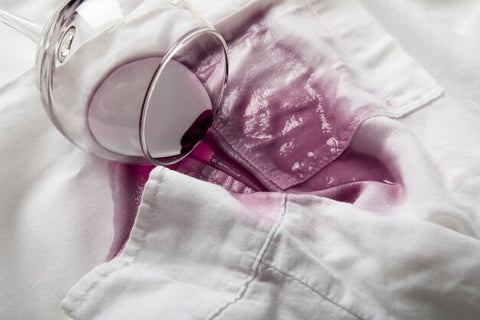
Stain Removal Basics: How to Keep Your Clothing Clean
Tired of tossing clothes just because of a pesky stain? You're not alone!
Stain removal is the unsung hero of wardrobe longevity. It might not be the most glamorous topic, but learning how to treat stains properly will keep your clothing looking its best, and encourage you to keep your clothing vs. tossing them when disaster strikes. Because let's face it, that's where the real glamour lives - in the confidence of knowing your outfit is pristine, no matter what life throws your way.
But let's be real, navigating the world of stain removers can be a bit of a gamble. Some work like magic, while others... not so much.
Flashback to a few years ago: I was on a mission to detox my cleaning routine. I eliminated as many toxic chemical cleaners from my home as possible--including the ones in my laundry routine. And you know what I discovered? Most stains can be tackled with stuff you probably already have at home!
So here's the exciting news-- I've taken the years of trial and error with stain removal and compiled all of my favorite hacks into one place, with step by step instructions and helpful hints on how I remove all the most common (and some uncommon) stains. Sound like something you need? Fill out this FORM and be the first to know when The Stain Removal Criteria is available.
Today, I've got some insider tips to share on mastering the art of stain removal like a pro. Let's dive in!
Treat the stain as soon as possible.
The less time a stain has to soak in, the easier it will be to remove.
Different types of stains require different treatments.
Substances react in unique ways to different water temperatures and treatment solutions. Using the wrong solution can make the stain worse or damage the fibers of the garment. Avoid these mistakes by following the tips in this article. (More information on this coming in the Stain Removal Criteria)
Most stains take more than one treatments.
If a suggested method doesn't work, it is very likely that you just need to try again. Sometimes if takes 3-4 rounds of stain removal before the stain is completely gone!
Dab or Blot vs Scrubbing.
Scrubbing can not only push the stain further into the fibers, it can also spread the stain. Carefully blotting the stain is aways your best bet.
Flush from the backside of the garment.
This will help in pushing the stain out and keep it from setting in further.
The dryer is NOT your friend during the stain removal process.
Heat can set stains even deeper into the fibers of your garment making it even harder to remove them. During the stain removal process air dry garments until you are confident a stain is gone.
Hydrogen Peroxide is a great follow up to finish removing a stain.
It works for stain removal on protein and plant based stains. It is great for mold/mildew, blood, sweat, fruit and vegetable, and dye transfer stains. HOWEVER, you only want to use Hydrogen Peroxide on washable, dye-stable garments! Always test on colored clothing in an inconspicuous spot before treating a stain and only let sit on garments for 10-15 minutes before rinsing off or washing according to directions on care tag.
Know your stain removal go-to products.
A few key ingredients on hand will have you ready to treat just about any stain.
White Distilled Vinegar is one of the best natural cleaners. White Distilled Vinegar is mildly acidic so it works to break down stains without damaging clothing. It also helps with odors on many different types of material. The acidic molecules bond with the odor causing compounds and as the vinegar evaporates-it takes the stinky molecules with it, leaving behind no scent.
Dish Soap or Castile Soap is a mild and effective solvent, great at cutting the grease that exists in most stains. Both are gentle enough for all types of fabrics.
Baking Soda is sodium bicarbonate and is known best for softening wash water and which helps detergent be more effective. It works great as a stain remover when turned into a paste with a solvent and an acidic or lightening agent.
Super Washing Soda is sodium carbonate and is best known as a laundry booster. It will help activate the other ingredients you use in a wash cycle. It is a highly alkaline substance- so it acts as a solvent to dissolve stains. In a wash cycle it softens the water to help suspend dirt, grease, and grime in the dirty water and carries it out when the wash cycle ends.
Lemon Juice has citric acid that can help to break down stains. Lemon juice is a natural whitening agent--which is great for getting stains out of white or light colored garments.
Hydrogen Peroxide has a bleaching effect without destructive color changed.
Rubbing Alcohol is great for removing inks, dyes, and chemical based stains.
Stains happen, and it's disappointing. But here's the silver lining: with the right know-how, you can rescue your favorite articles of clothing from even the toughest spills. So, next time disaster strikes, remember: don't toss it, treat it! Because with a little stain-fighting savvy, your wardrobe can stay fabulous, stain-free-- empowering you to express yourself confidently through your unique sense of style.
Coming soon to Criteria-- A Guide with recipes and step by step instructions and specifics on how to treat the most common stains. Don't miss out on owning your own copy! Fill out this FORM and you will be one of the first to know when it is available.

Comments (0)
There are no comments for this article. Be the first one to leave a message!